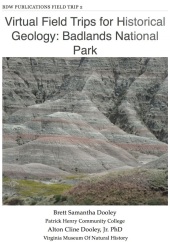I recently finished reading Anthony Martin’s book about dinosaur trace fossils, Dinosaurs Without Bones, so I’ve had trace fossils on my mind. Even though I’m not a trace fossil specialist I find them intriguing, because they are essentially fossilized behavior.
The bone shown here is the distal part of a right tibia from a bison (it’s from the older end of the valley, so it could be either Bison antiquus or Bison latifrons). Above is the anterior view, with the bottom of the bone (at the ankle joint) on the left. The proximal part, including the knee joint, is missing. Below is the posterior view of the same bone:
Even in these views, you may have noticed that the distal end of the bone is a little misshapen. Close-ups reveal that this bone is absolutely riddled with bite marks, presumably from a predator/scavenger gnawing on the bone:




The broken proximal end also has plenty of bite marks:


This bone is crying out for a more detailed study. There appear to be at least 2-3 different sets of scratches with different widths. Does this indicate that there were different-sized scavengers? If so, are we looking at different species taking turns (maybe dire wolves followed by coyotes), or different ages of the same species (adult wolves and their pups)? If the scratches show cross-cutting relationships, it might be possible to figure out if the big animals were eating before the small ones, or the other way around, or at the same time.




